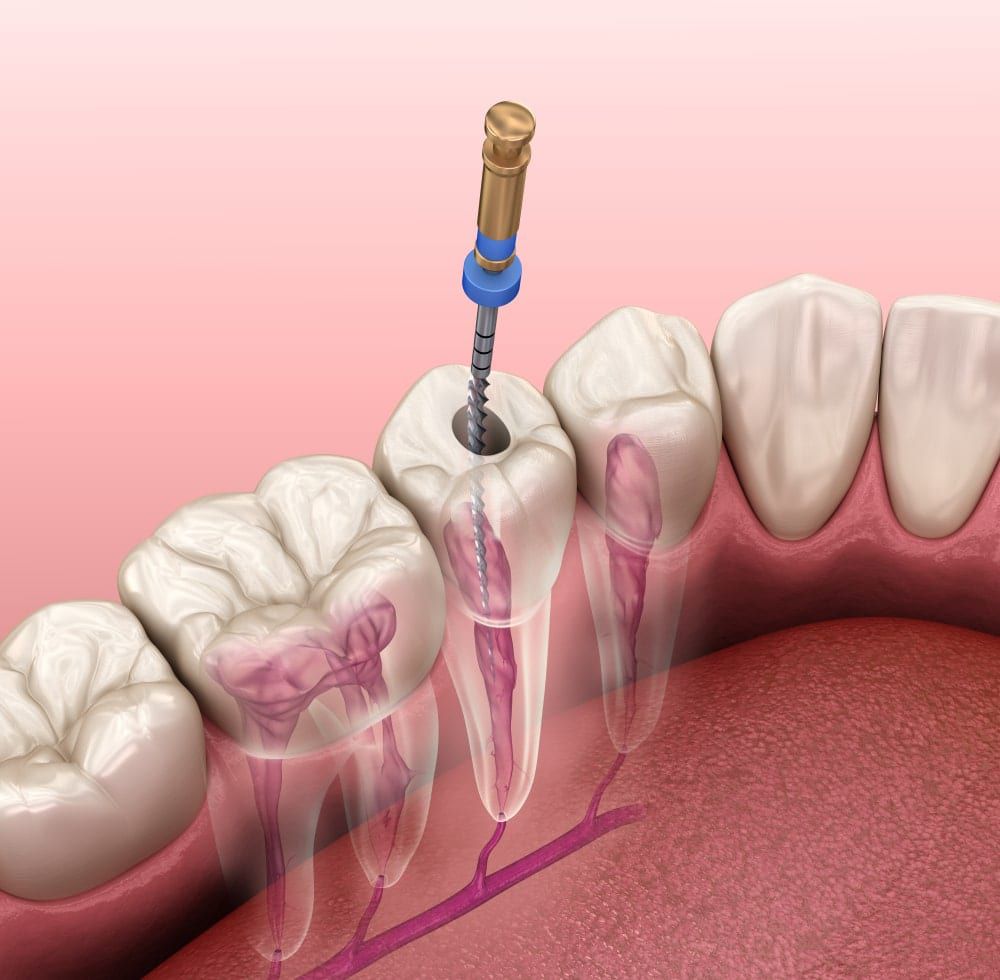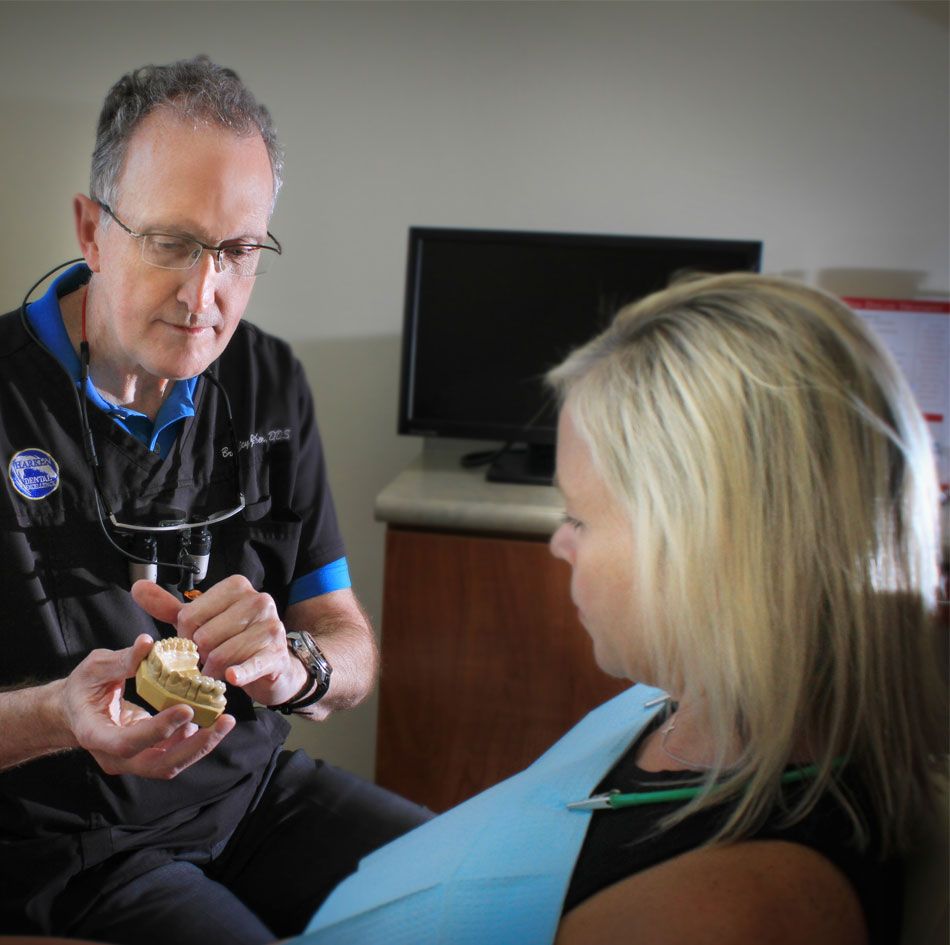Root Canal Treatment in Spokane Valley
Endodontics, often known as root canal therapy, is a set of procedures used to address problems with the soft pulp (nerve) tissue inside the tooth. Although some mistakenly believe it to be uncomfortable, it usually isn’t any worse than getting a filling. In fact, it’s among the finest remedies for several kinds of tooth discomfort.
A root canal is required when infection or inflammation reach the pulp tissue of the tooth. Since the pulp tissue contains nerve cells, connective tissue, and blood arteries, a problem there can be highly painful. The discomfort might go away with time… at least momentarily. The condition won’t go away, though, if it isn’t addressed. Dental abscesses and, occasionally, systemic problems with other body parts may emerge from it.

Root Canal Therapy in Spokane Valley
Everyone has heard the joke “I’d rather get a root canal.” Saying that the process is equivalent to something truly horrific is amusing, but delaying necessary endodontic therapy is not anything to laugh about. An urban myth holds that root canal difficulties and discomfort are unavoidable. It is true that a pulpal infection or inflammation can cause agonizing pain. But keep in mind that a root canal only addresses the symptoms; it doesn’t address the underlying cause.
Do you still need an excuse not to schedule a root canal? Consider that when a natural tooth is saved by root canal therapy and restoration, you can avoid the issues that frequently develop when teeth must be pulled. Some of these include the requirement for expensive and time-consuming bridgework or dental implants, as well as the eventual loss of bone structure in the area of the missing tooth. Chewing problems can also be caused by tooth movement or migration.
Main Reasons for Root Canals
Root canal issues are typically caused by infection and inflammation of the tooth’s pulp tissue. One element that contributes to infection is deep dental decay. If left unchecked, bacteria will reach the pulp tissue in the tooth’s center, where they may lead to an infection. Additionally, bacteria may enter the pulp through broken or damaged teeth. Any blemish in the enamel’s protective barrier could allow bacteria to enter the tooth pulp.
Pulp tissue damage can also be caused by trauma to the tooth, such as the kind that could happen in a car accident or during sports. In this situation, it’s critical to seek treatment right away in order to try to save the tooth and avoid further issues.
In some cases, extensive dental work may harm the pulp tissue, necessitating a root canal. This type of injury is more common if the same tooth has multiple fillings or restorations. Common procedures like dental crown preparation or orthodontics may lead to root canal issues.
Root Canal Procedure
If a dental examination reveals that you do require root canal therapy, don’t worry; it’s one of the most common and successful operations available and is frequently completed in a single appointment.
A local anesthetic is used to numb the tooth and the surrounding area before the root canal procedure typically starts in the same way that a filling does, and with no more discomfort. Many patients’ worst experiences have already ended.
The pulp chamber and root canals are then accessible by making a little cut on the surface of the decayed tooth. Small devices, occasionally with the use of a microscope, are utilized to remove the dead and dying pulp tissue from inside these constrained passageways. The chamber and open canals are then cleaned, sterilised, and prepared for the infusion of the inert, biocompatible material. Finally, the tooth’s opening is sealed off with sticky cement to stop further infection.
Your tooth may be sensitive or hurt for a few days following root canal therapy. Ibuprofen and other over-the-counter pain relievers are frequently effective, but doctors may also prescribe prescription drugs if necessary. It might be advantageous to refrain from giving the impacted tooth a hard bite at this time. All of these signs and symptoms need to go quickly.
To further protect the tooth and return it to full functionality, another procedure, such as a crown, is frequently needed. Restorations are available in a wide range of sizes and styles, from conventional gold crowns to cutting-edge dental reproductions constructed of tooth-colored material. In any scenario, maintaining your dental health requires a long-term commitment from you.
When May be Root Canal Needed
How can you determine whether you need a root canal? It can be uncomfortable to see at times. If you frequently and severely experience pain or pressure in your mouth, as well as observable swelling and high degrees of sensitivity in your gums, it is apparent that you require prompt diagnosis and treatment. Sharp pain experienced when biting down on food is another obvious sign of pulp tissue damage. Pain that persists after consuming hot or cold meals is another warning sign. As soon as you have any of these symptoms, you should seek medical attention.
Root Canal in Spokane Valley, WA - #1 Endodontist Near Me - Spokane Valley Dentist for Root Canal
Meet Your Top-Rated Family Dentist in Spokane Valley

Our Dental Services
Dental Crowns
Emergency Care
General Dentistry
Implant Dentistry
Orthodontics
Pediatric Dentistry
The Proof is in our Patients





